#for once not a manuscript
Text
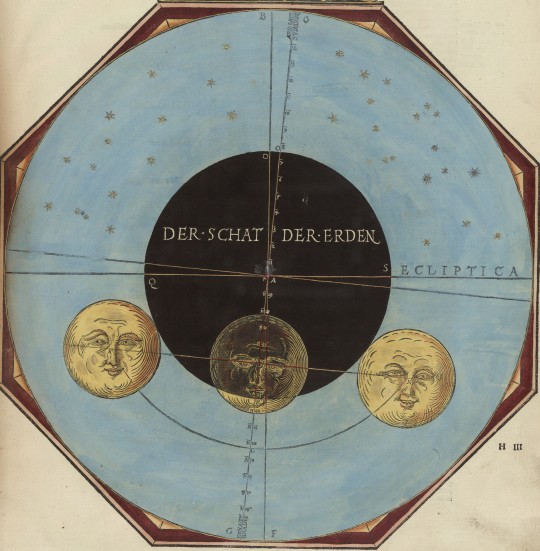
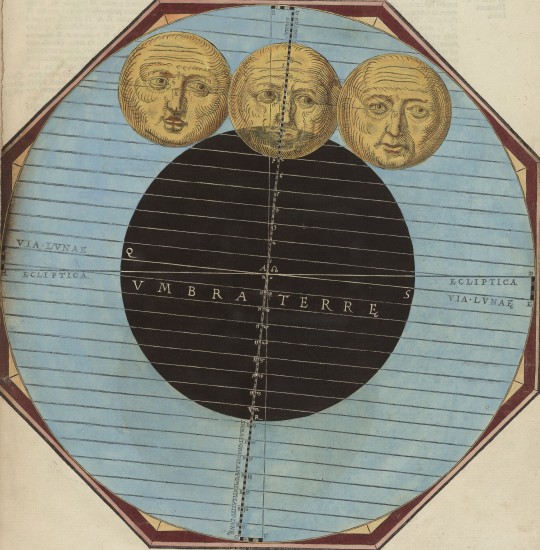
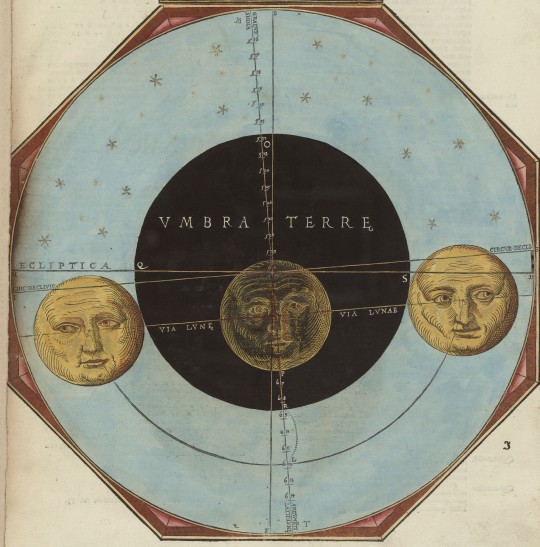
partial and total lunar eclipses
woodcuts in Petrus Apianus' "Astronomicum Caesareum", a printed astronomical book, Bavaria, 1540
source: Kassel, Universitätsbibliothek, 2° Ms. astron. 16, fol. 67r, 68r and 69r.
#for once not a manuscript#woodcuts#astronomicum caesareum#petrus apianus#lunar eclipse#historical astronomy#umbra terre#astronomy#astronomical illustrations#16th century#moon
196 notes
·
View notes
Text

Psalters: Not even once.
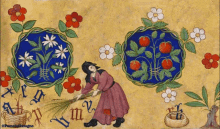
604 notes
·
View notes
Text

suptober 4-5-6: nimbus, portrait, full spread
#suptober23#inktober#artists on tumblr#destiel#dean winchester#castiel#fan art#my art#my posts#angel wings#angel halos#angel of the lord#raised from perdition#4x02#i recreated the illustration from the manuscript in 4.02 of an angel raising a man from hell#i merged a bunch at once bc i’m travelling this entire week and won’t be able to do any 😔#nimbus: the halo. portrait: the illustration i based this off of. full spread: his wings. or the pages of the manuscript
402 notes
·
View notes
Text
Without getting too much into it, the most heartbreaking line in the manuscript to me is “She knew what the agony had been for” because all the time she didn’t even realize what had happened to her. She’d clearly denied it, dismissed it, insisted that no it wasn’t like that, she was an adult! She was capable of making her own choices! Maybe she didn’t want to taint happy memories. He was just a shitty boyfriend and they broke down and broke up like all couples do. She knew what it looked like but no no, she was fine in that regard. He never… no she wasn’t a victim like that. And yet…. She couldn’t move past it, couldn’t lay it to rest. Wondering why she agonized over it, felt sick over it, went over it again and again, haunted by it unlike other breakups. It took all those years and making the short film and seeing 20 year old Sadie Sink in that room with adults and fighting with an adult man to realize oh…. She’s a child. They were right. That is what happened to me. I was a child. And the deluge of pain that comes with finally confronting that. The song drops off after that, the pain unspeakable, and skips to the present, where after exorcising that demon finally, “all that’s left is the manuscript.” And she can finally close the book on that story in her life and not have it define her anymore. But that line really just hits home how long she had been carrying the burden of that unspoken and unresolved truth, buried under denial, slowly festering and poisoning her for some 10 years. God damn.
#like I know the last line is what everyone likes but tada once again#I’m like no wait it’s THIS line that tells you way more#and hits like a freight train with all that it conveys#maybe she did go to therapy who can say but she finally confronted something major and I love that for her#the manuscript#Taylor swift
112 notes
·
View notes
Text
tfw you're really down with a post until it starts insisting that both a) job-related malaise and frustration and b) scribal labor in monastic contexts are and were specific to young adults and not just a general condition of a) having a job, even one you mostly like and b) being a medieval monk, not a profession that had a corporate ladder
#like i know this is the logan's run website but still#why would you assume medieval scribes were all or primarily young people?#i guess once you turn 30 you lose your humanity and become a corporate drone or sth#anyway it seems like in most monastic communities everyone had multiple jobs#and few if any monks would ONLY do scribal work#although probably you would do more if you were good at it#ALSO funny marginalia like all illustration in medieval books were carefully planned#there are things in manuscript books that can be read as scribal expressions of frustration#but illustrations are always deliberate even if they're subversive
35 notes
·
View notes
Text
I hoped against hope that Taylor would give me an all too well for my adult self on this record and she really said “bestie I’ll do you one better” and slipped me The Manuscript. I’ve honestly never wanted to unhear something more in my life. Turns out I was not prepared.
#to be clear I love it more than anything#I just wasn’t ready to sob like this for hours#I haven’t got through it once without losing it#but I know it’s gonna be SO healing#I just did my makeup and it’s completely fucked now lol#taylor swift#the manuscript#the tortured poets department#ttpd#the tortured poets department: the anthology
20 notes
·
View notes
Text
that moment when saga fights against the darkness in her mind place and opens the door to leave and it starts to pan out—showing nothing but stars just like the Night Springs intro before she appears in the dark place’s new york. Traversing the void in between worlds just like her dad. cinema!!
#it’s also creepy. the implication that the dark place is either this other world/entity or something between worlds#it’s huge and nothing but (possibly) was shaped through contact by Zane/alan/artists#I can’t remember exactly the words but that one manuscript with Alan’s scratched out edits#where he called Cauldron lake a black mirror#that just by looking at it you’d know it was ‘too late’#the mountain being the site of a caldera. as casey says the opening to hell#anyways it’s very existential and terrifying#alan wake 2#saga anderson#ahhhghghhhhgghh I can’t stop thinking about the ending of this game#saga being an Anderson and a Door. being a seer and maybe even having the ability to traverse worlds.#door being everywhere and in between. all at once. fascinating#I don’t even know if this is the takeaway for that scene. the resemblance to night springs just intrigues me esp since the door manuscript#shows up right after this
24 notes
·
View notes
Text

Erinys :~) she can put her wings away when she doesn't need them
34 notes
·
View notes
Text
huh this thesis is not bad actually
#love to read my own work once enough time has passed and be shocked to discover that I sound like a Real Academic#bro I even talk about variant manuscript readings#i do not remember putting that much effort into this thing
21 notes
·
View notes
Text
In light of that post I reblogged yesterday where it turns out that 40,000 words is considered a novel?


To be fair, there are so many worse things you could do whilst in the throes of the most well-justified mental break that anyone on any plane of existence has ever had but also--
Girl, what?
#momo hinamori#toshiro hitsugaya#'loaded with outtakes'#real credit for this goes to b3 b/c i never would have noticed this if they hadn't pointed it out in an ao3 comment once#look there is just SO MUCH going on in Color Bleach+ it's like house of fucking leaves#i believe in my heart that this issue never made it to print#both because hitsugaya shut it down as soon he saw the ad for it#--did he even see this??? he was in the living world when this issue came out.#maybe that's WHY they thought they could get away with a Capt Hitsugaya special edition--#in any case i think hisagi had an aneurysm THAT IS TOO MUCH PAPER WE WILL GO BANKRUPT#but at the same time this manuscript EXISTS#WHO has SEEN it i need to know#hisagi obvs but i doubt he read it cover to cover he was having The Struggles at the time#normally i would say renji but he was in the living world as was matsumoto#kira was also Going Thru It but i can def see him grimly beta-reading this thing#you know i hope hitsugaya WASN'T aware of this thing at all#until like 3 years later when byakuya is like 'so as per your biography--'#and toshiro is like 'as per my W H A T?'
191 notes
·
View notes
Text

"Again I tell you, it is easier for a camel to go through the eye of a needle than for a rich man to enter the kingdom of God"
illustrated parable in "der spiegel des lidens cristi" (illuminated bible), alsace, mid-15th century
source: Colmar, Bibliothèque municipale, Ms. 306 (Cat. no. 213), fol. 32v
291 notes
·
View notes
Text
The altered names and descriptors of Patron-Minette’s rogues from 1847 to the formal publication of Les Misérables:
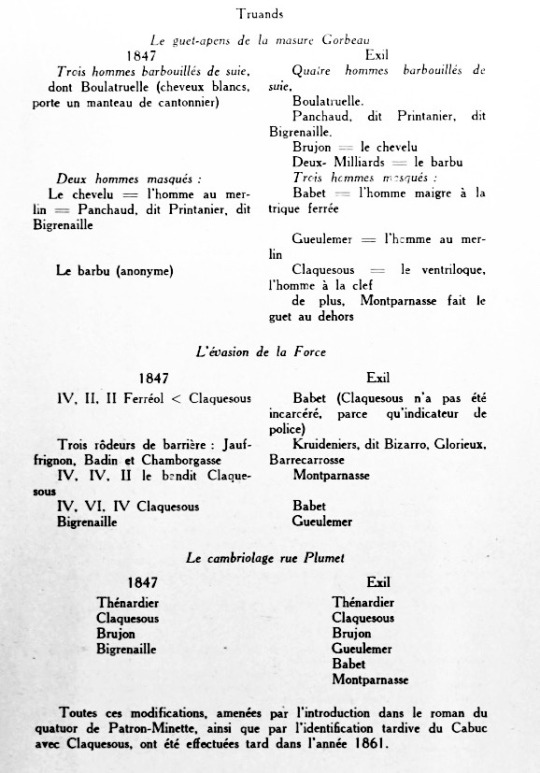
[Source, Le Manuscrit des Misérables by Guy Robert and René Journet]
The extract at the end of this passage reads [amateur translation]: “All these changes, brought about by the introduction of the Patron-Minette quartet into the novel, and the belated identification of Le Cabuc with Claquesous, were made late in 1861.”
It is so interesting to me that the dedicated chapter introducing Patron-Minette’s four ringleaders came about at a much later point in Hugo’s drafting of the novel, and it is fascinating to see the restyled names (and added/cut characters) evolve over time.
I’ve been struggling to decipher the earliest names of Patron-Minette’s criminals in Hugo’s handwritten manuscript for quite some time now (particularly during the section focussed at La Force), and I’m overjoyed to have finally found a source that can provide further information about the original titles for these characters!
#patron minette#patron-minette#les miserables#les mis#the brick#FINALLY I now have confirmation that Claquesous was once ‘Ferréol’— I’d seen it written in the original manuscript but couldn’t decipher it!#I love that Montparnasse came into existence at such a late point in Hugo’s drafting#now to research any potential meaning behind these disused names >:)#the original manuscript#cut content
20 notes
·
View notes
Text

[Rutland Psalter, British Museum]
16 notes
·
View notes
Text

Smile! You are in a bestiary!
This particular bestiary-- possibly made in Lincoln-- has been influencing authors and artists for about 800 years. It was the subject of a facsimile by M.R. James (yes, that M.R. James the ghost story writer, who was a librarian in his day job). It was then translated by T. H. White (yes, that T. H. White, the author of The Once and Future King which inspired both Walt Disney and the creators of the musical Camelot).
The text on the elephant covers a lot of elephant myths and legends (and some historical kernels). It starts by announcing that elephants do not like to copulate, then covers their name,
"People say that it is called an Elephant by the Greeks on account of its size: you see, a mountain is called "eliphio" in Greek. In the Indies, however, it is known by the name "barus" because of its voice-- whence both the voice is called baritone and the tusks are called "ivor" [ebur in Latin]."
~T.H. White (trans. and ed.), The Book of Beasts: Being a Translation from a Latin Bestiary of the Twelfth Century (Parallel Press: Madison, Wisconsin, 1954; reprinted 2002), p. 25.
The text then goes on to discuss elephants' size, use in Indian and Persian armies, memory, fear of mice, gestation time, and support for each other. The text also notes that they never "quarrel with their wives" not commit adultery, while explaining Christian allegories about snakes as Satan and elephants as representing Christians, Adam and Eve, the Old Testament, 12 Apostles, Jesus, and the Good Samaritan. With such a repository of elephant lore, no wonder this book has inspired authors through the centuries.
Date: start of the 13th century (c. 1220?)
Origin: England (Lincoln[shire]?)
Now Cambridge University Library, MS Ii.4.26, f. 7r
#elephant#elephants#medieval elephant#illuminated manuscript#manuscript#war elephant#13th century#t h white#m r jame#once and future king
15 notes
·
View notes
Text
wanting to tell stories but being so caught up in deciding a format and how i wanna tell it that i just. dont.
#personal#RAAAAAH#i just need to fucking write 😭 the writing part of my brain is brokeN#literally have 30k of a manuscript but its like hmmm what if i. scraped that. and started again#love starting something and then getting frustrated/bored once the beginning is over <3
48 notes
·
View notes
Note
HAPPY BIRTHDAY WEEK >o<
TEEHEE YIPEEE!!!
#ask#on another note there are#3 chapters left in the rewrite#and I am so excited to finish#then I can focus on editing the final manuscript#I’m gonna give a few select people access#noogit for example#to let them read it all at once in its final form to make sure it all makes sens
7 notes
·
View notes